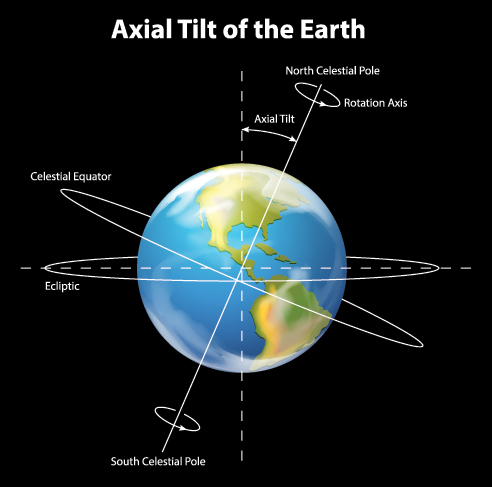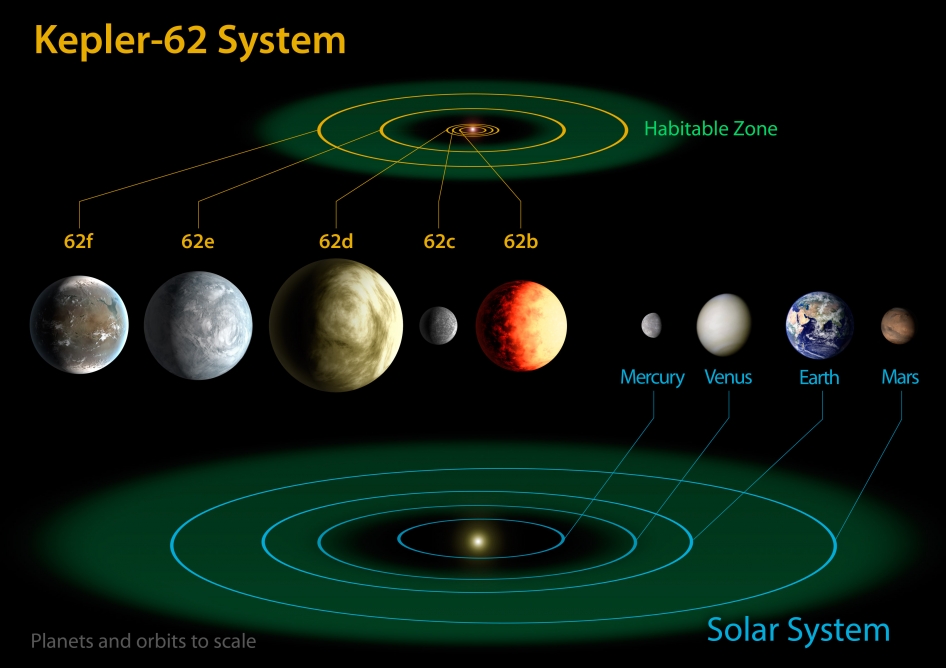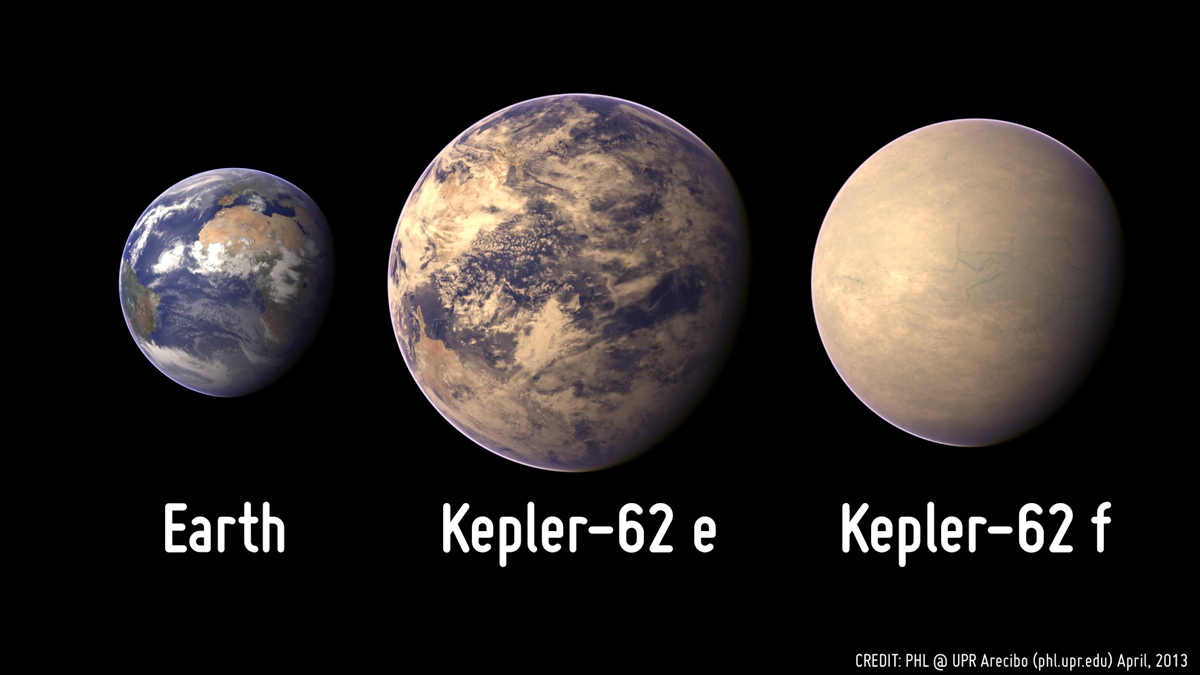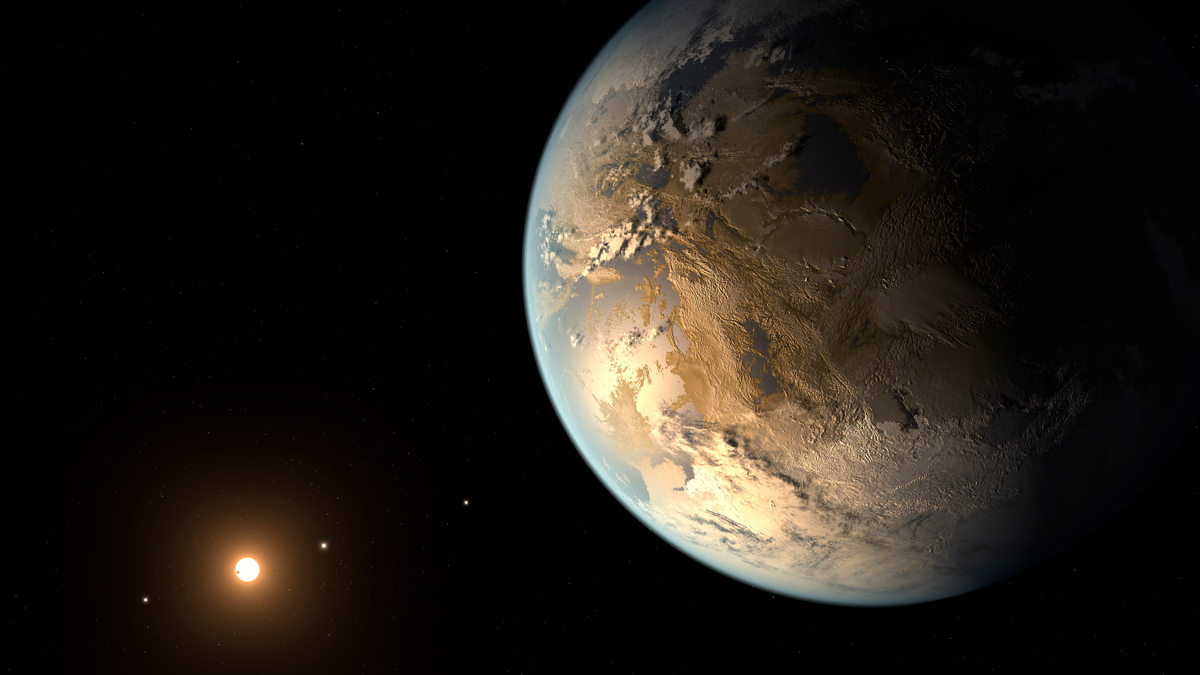How Alien Planets Can Change Each Other's Habitability Over Eons

A new study sheds light on how exoplanets in tightly-packed solar systems interact with each other gravitationally by affecting one another's climates and their abilities to support alien life.
Because the exoplanets are so close to one another in these compact solar systems, they have tidal influence, much like the Earth and the moon have on each other. The tides modify the spin rates, axial tilts and orbits of these planets over time, and therefore alter their climates.
The study examines two exo-solar systems — Kepler-62 and Kepler-186 — that have made headlines for hosting worlds orbiting in the "habitable zone," the potentially life-friendly band where water can remain liquid on a planetary surface. The findings show that tidal evolution can profoundly impact a world's climate. [The Habitable Zone of Exoplanets Explained (Infographic)]
"We wanted to investigate the question of the influence of tidal dynamics on the climate of 'habitable' planets," said lead author Emeline Bolmont, a post-doctoral research scientist at the University of Bordeaux in France at the time when the research was conducted, and now at the University of Namur in Belgium.
The findings can help astrobiologists understand how habitability is affected by the complex gravitational interplay of neighboring planets. The paper were published in March 2015 in the book "Complex Planetary Systems (IAU S310)," a publication of the International Astronomical Union (IAU).
The big picture factors for climate
Almost half of the 1,100-plus exoplanetary systems now known contain multiple planets in the manner of our solar system. Because our ability to discover exoplanets is still at an early stage, our instruments are biased towards detecting planets that closely orbit their host stars. As a result, many of these multi-planet systems we know of look like scrunched-up versions of our solar system. These compact solar systems often have several planets whirling around in orbits within the same distance as Mercury is to the sun.
The proximity of these planets causes them to exert tidal influences on each other, modifying their rotations and axial tilts. The moon's gravity has similarly acted like a brake on Earth's rotation, slowing it from a primordial six hour day to the just-shy of the 24 hours we set our clocks to in modern times. The moon's stabilizing mass also helps maintain Earth's axial tilt of 23.44 degrees, which gives us our seasons and moderates the planet's overall temperature, much to life's benefit.
Breaking space news, the latest updates on rocket launches, skywatching events and more!
In the solar systems Kepler-62 and Kepler-186, tidal effects from their various planets and host stars similarly impact the planets' rotation and axial tilt. The general effect is slowed-down planetary spin rates, as well as axial tilts that are regularized in such a way as to spin perpendicular to the plane of their orbits (they have zero axial tilt). The new study evaluated how the gravity of closely interacting exoplanets might modify these two climate-determining parameters over billions of years. The study also briefly assessed the bigger-picture factors of planets' orbital shapes and distances to see how stable these would remain in compact multi-planet solar systems. Both variables, of course, have a fundamental impact on a planet's climatic characteristics. [Kepler's Amazing Exoplanet Discoveries]
"The presence of liquid water on a planet's surface depends on many different parameters, some of which are the orbital distance, the shape of the orbit, the direction of the rotation axis of the planet and the rotation period of the planet," said Bolmont. "All these quantities are influenced by dynamics and in particular by tidal dynamics."
Alien solar system models
The study ran computer simulations of the Kepler-62 and Kepler-186 solar systems using to the best data available. Each system's star is a red dwarf, which is smaller and dimmer than the sun, and hosts at least five planets. The exoplanets Kepler-62e and Kepler-62f, both super-Earths, orbit in the habitable zone. Kepler-186f, meanwhile, is the first approximately Earth-sized exoplanet discovered in a habitable zone. It is therefore widely considered among the best candidates yet spotted for harboring extraterrestrial life.
The computer simulations focused on how the gravitational push-and-pull of the overall system affected these three exoplanets of interest. For the masses of the exoplanets in their models — which determines the planets' gravitational attraction — Bolmont and her colleagues assumed Earth-like compositions for all five Kepler-62 worlds. For the Kepler-186 system, the researchers played with the compositions to get different masses to see what would happen. The compositions ranged from pure, low-density ice to pure, high-density iron (higher density packs in more mass to the same volume). [Exoplanet Quiz: Test Your Alien Planet Smarts]
An innovative aspect to the computer simulations is a new code developed by Bolmont and colleagues. The code calculates the gravitational interactions between the stars and the planets in Kepler-62 and Kepler-168, computing the resulting orbital evolution of the planets.
The code is more sophisticated physics-wise than those that have powered prior simulations. It adds to the key tidal effects previously discussed, as well as rotational flattening (spinning bodies bulge at their centers, influencing their orbital evolution) and even Einstein's general relativity, a more accurate description of gravitation than simple Copernican physics, often used in similar simulations.
"We try to take into account the most important dynamical processes for the evolution of a system," said Bolmont.
The code will be publicly released soon so other scientists can run simulations and tinker with it.
Keeping it all together
The Bolmont simulations showed that tidal effects in general can help make compact, multi-planet solar systems more stable. The gravitational interplay in simpler runs of the model, without the added-in, relevant physics, worked in setting planets on wild orbits. The system would destabilize, with planets colliding or getting flung right out of the solar system. A destabilization scenario would almost surely be lethal for whatever life might have gotten going in tight, multi-planet systems.
But the addition of tidal effects and the other physics previously mentioned kept the worlds snugly in their respective orbital lanes, at least for the simulation's duration. The additional gravitational checks and balances help preserve a solar system, it would appear.
That's a good sign for life if compressed multi-planet systems can remain together for long periods. Life took several hundred million years to develop on Earth, and a few billion to develop complexity.
Changes over time
Individually, the axial tilts and spin rates of Kepler-62e and Kepler-62f did evolve considerably, and in varying ways, over the course of seven billion years.
"We found that Kepler-62e and f are likely to have different climates," said Bolmont,
Kepler-62e, according to the simulation, is likely to have a very small axial tilt, thanks to the braking as well as accelerative effects from the other planets in its solar system. Lacking much tilt, Kepler-62e would not experience seasons and its poles would be quite cold. Earth, with its seasons, has cold poles too, of course, when compared to its hot equatorial regions. But the difference in temperature on Kepler-62e between its equator and poles would be far more pronounced.
The exoplanet's rotation would possibly slow to a day-length equivalent of 125 or so Earth days. A planet's rotation also contributes to moderating its surface temperatures, like a roast turned on a spit, such that one portion of the meat does not singe black while the rest is merely warmed. In the case of Kepler-62e, with its very slow turning, the side of the planet facing its star heats up considerably more than the night side, plunged into darkness for a third of an Earth-year.
Kepler-62f, on the other hand, is located farther out in the exo-solar system than planet 'e.' The gravitational perturbation from the star and inner planets would not be as strong in the outer reaches. Even after seven billion years, Kepler-62f would not have had its axial tilt abolished by the solar system's other bodies. Kepler-62f should therefore still have an axial tilt, and thus seasons, and a day length perhaps broadly similar to Earth's.
"Kepler-62f is located farther and wouldn't have had time to tidally evolve," said Bolmont.
Fingers crossed for Kepler-186f?
The case for Kepler-186f is less clear-cut. We know the age of the Kepler-62 solar system, but do not know it yet for Kepler-186. That data is important because the tidal evolution dynamics require long time scales to bring about significant changes in a planet's parameters. By making some assumptions, though, the Kepler-186 system model can still offer insight.
Assuming that the whole system is older than four billion years, as a separate recent study has suggested, then the four innermost planets in Kepler-186, being located so close to their star, will likely have had any axial tilt to be erased. In the case of Kepler-186f, the outermost planet and the one of interest in its potential habitability, an old solar system would mean it, too, has little to no axial tilt and a day-length of approximately 125 Earth-days.
If the Kepler-186 system is less than a billion years, Kepler-186f might still have a high axial tilt and a fast spin rate, more like Earth's. The axial tilt might be so high, the models showed, on the order of 80 degrees, that the planet could be spinning on its "side," as it were, like Uranus in our solar system. (Uranus is thought to have been knocked on its side by a collision at some point in its planetary lifetime. The world is too isolated for the Sun or other planets to tidally "right" the planet back up.) Under that scenario, Kepler-186f would develop a very cold hemisphere that is pointed away from the star, and a possibly too-warm hemisphere facing the star.
Given the holes in the data, the jury is very much still out on how much Kepler-186f's evolution is tidally influenced.
"We don't have enough data, such as the age of the system," said Bolmont.
The overall takeaway from the study is that planets can indeed gravitationally influence each other in compact solar systems in ways that heavily influence climate and therefore habitability. Much more work needs to be done in this area, said Bolmont, to better learn how orbital shapes and distances change over time.
"These are still open questions," said Bolmont. "There is a lot of diversity in the orbits of the habitable zone planets, and thus in the climate of habitable worlds."
This story was provided by Astrobiology Magazine, a web-based publication sponsored by the NASA astrobiology program. Follow Space.com @Spacedotcom, Facebook and Google+.

Adam Hadhazy is a contributing writer for Live Science and Space.com. He often writes about physics, psychology, animal behavior and story topics in general that explore the blurring line between today's science fiction and tomorrow's science fact. Adam has a Master of Arts degree from the Arthur L. Carter Journalism Institute at New York University and a Bachelor of Arts degree from Boston College. When not squeezing in reruns of Star Trek, Adam likes hurling a Frisbee or dining on spicy food. You can check out more of his work at www.adamhadhazy.com.





